Plastids are an extremely useful and uncommon resource in Warframe, but they’re possibly one of the more annoying to farm. Here are our suggestions on how to get plastids in Warframe.
Where to find Plastids in Warframe
Plastids can appear on Saturn, Uranus, Phobos, Pluto, Eris, and in the open-world area on Deimos. For newer players, this will mean your first plastids farm option in Warframe will be on Phobos, which isn’t particularly great, as it competes with the ultra common drop Alloy plate.
Plastids can be found on these planets (with the exclusion of Deimos) as a universal enemy drop, container loot, mission rewards and everything else you’d expect from a native resource. With Deimos specifically, they’ll typically be in specialized open-world containers and are not part of the local loot ecosystem.
There are three different methods for stocking up on Plastids quickly:
- Using Extractors in specific areas
- Farming the Ophelia survival node
- Destroying a specific type of Infested container in the Cambion Drift – the Rolizor Infested Cysts.
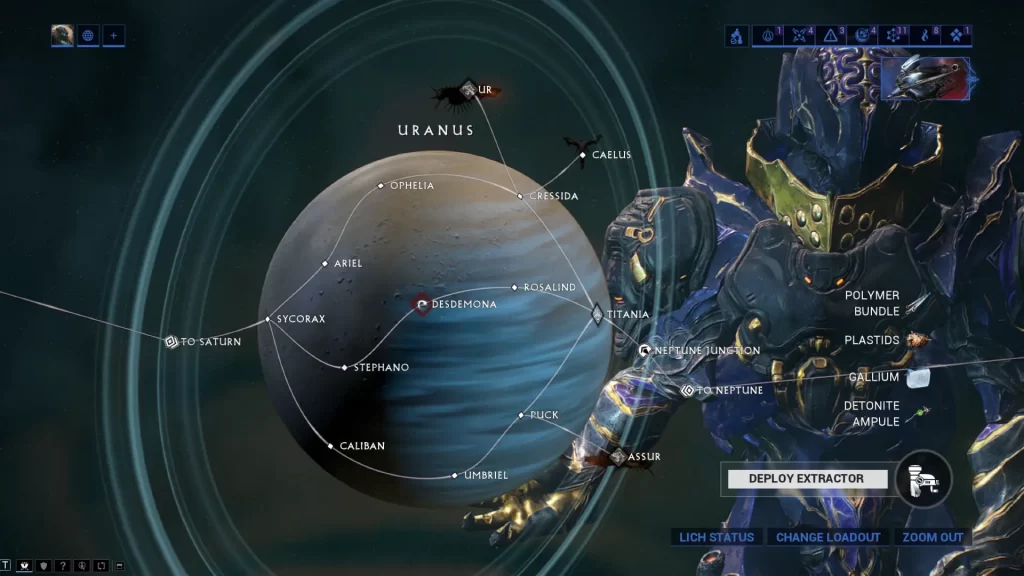
Screenshot by Gamezo
The problem with Plastids is scale. Rare resources by comparison drop one or two at a time. Rares are at most used in the twenties, though typically in lower amounts.
Plastids by comparison drop in amounts varying from the mid-tens to the mid-twenties. They are used in the hundreds at the lowest, and a number of crafting blueprints need thousands.
Uncommon resources are meant to drop more frequently than rare ones do, which would help with this. However, Plastids are one of the resources that simply doesn’t seem to drop much through regular gameplay. That leaves us needing to farm for Plastids in Warframe, much like how we would for a rare resource.
How to farm for Plastids in Warframe
While Plastids are definitely a bit of a nuisance to build up a stockpile of during regular gameplay, there are a number of farming options that can really help with this issue. Below are three different ways to farm Plastids in Warframe. We recommend you try each method to find what works the best for you.
Using a Titan resource extractor
A Titan resource extractor will be used to gather large chunks of Plastids at a time on a planet that has the resource. Typically the best option for this strategy is on Uranus. This is because the Plastids are in one of the early resource slots, making it a bit more likely that the Titan extractor can find it. Note that you can deploy multiple of these extractors at a time. It may well be worth placing Titans on other planets with Plastids as well.
Additionally, repeatedly using a Titan extractor on Uranus will also net you quite a bit of Polymer Bundle, which is also used in similarly large numbers. This makes for more of a passive, over-time strategy than other farming methods. Still, if you’re playing Warframe long-term, it shouldn’t be overlooked for how much easier it makes the Plastid grind.
Farming Uranus Survival mission Ophelia
Plastids are one of the resources where classic farming methods still outperform many of the newer competitors. Heading to the Ophelia node on Uranus will take you to a Grineer Sealab survival mission.
This tileset is rich with rooms that are great for setting up in and farming enemies, and Grineer themselves are the basic faction with some of the better drop rates available.
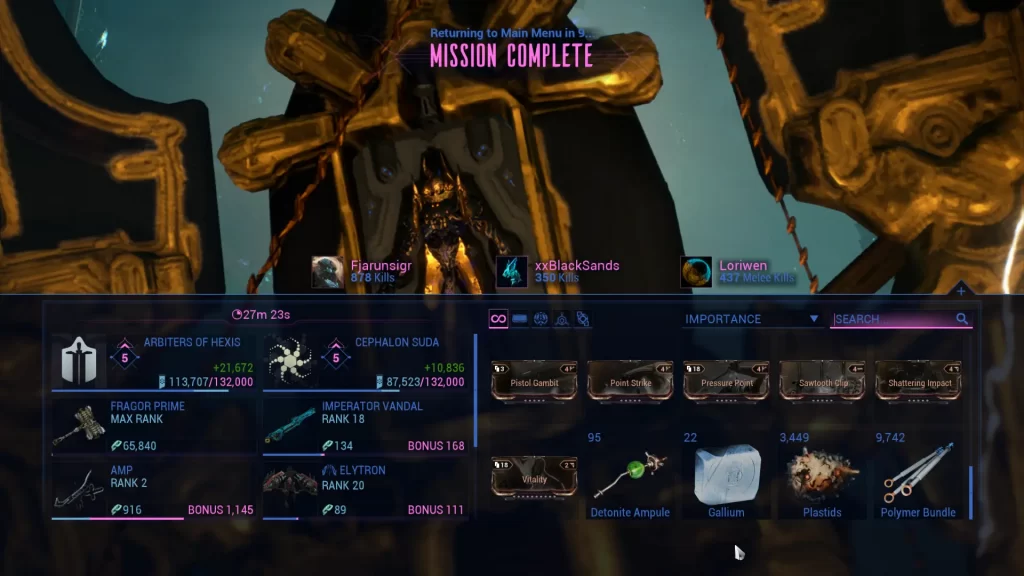
From my trial run of the node in matchmaking, I found a full team and got these results. 3,449 Plastids with only a single loot boosting Warframe. The Warframe in question was a pilfering strangledome Khora, which means there is still room for improvement for teams to bring a Nekros along as well, or instead of, the Khora.
This comes out to a bit over 100 Plastids a minute without a resource booster, which is all-in-all pretty good. It has the added benefit of finding plenty of Polymer bundles and Gallium, too. And if those extras weren’t enough, you can even expect a decent haul of Tellurium from enemy drops here too.
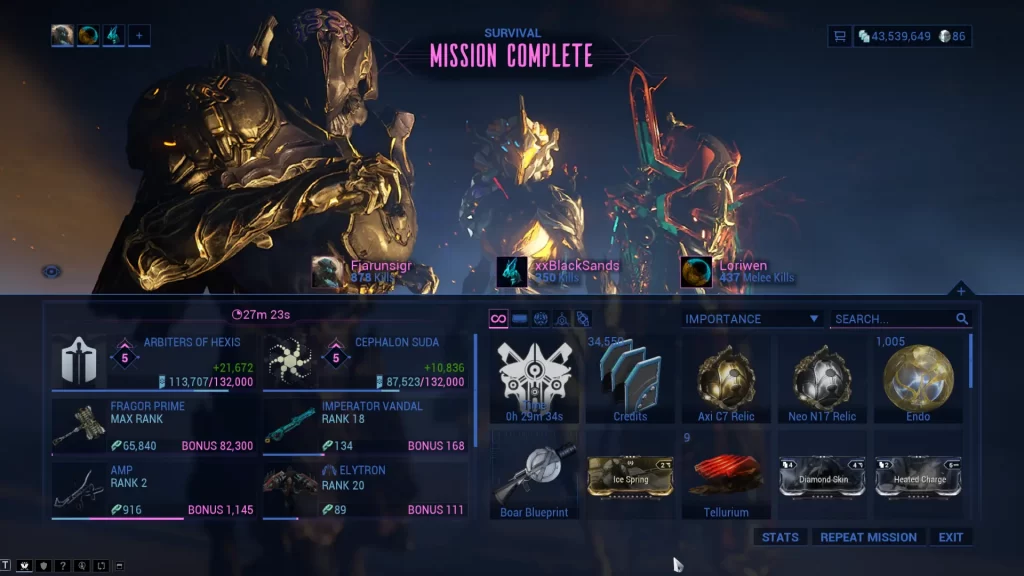
The core of this method is rallying your team in a single room, ideally one with multiple doors. The T-shape corridors on this tileset are ideal, but many rooms here work quite well. From here, set up, stay in that room and let enemies spawn around you, and move into your room. Naturally, kill the Grineer as fast as possible to maximize loot drops, but try to stick to the one room.
Heading into an adjacent room will temporarily block spawns there, which means the Grineer will have to travel an extra room to find you in the farming area you’ve set up.
Breaking infested containers the Cambion Drift
Certain containers in the Cambion Drift area may drop up to about 60 Plastids a piece. This can get pretty impressive, given that’s the basic drop rate. With a resource booster, you’d be looking at 120 per container you find and smash here.
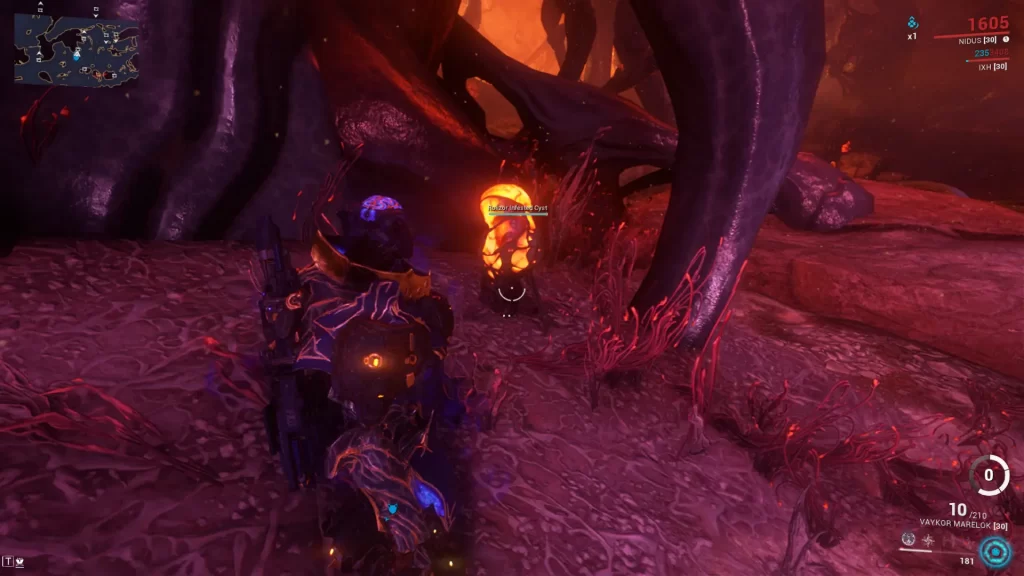
When marked or hovered over in-game, the name Rolizor Infested Cyst will appear. There are a few different types of Infested containers in the area, but for Plastids, you want to focus on these.
Some of the caves in the Cambion Drift feature a large amount of these containers, making them possible Plastid farming hotspots. The one shown near the player arrow to the left of the Necralisk is one such cave.
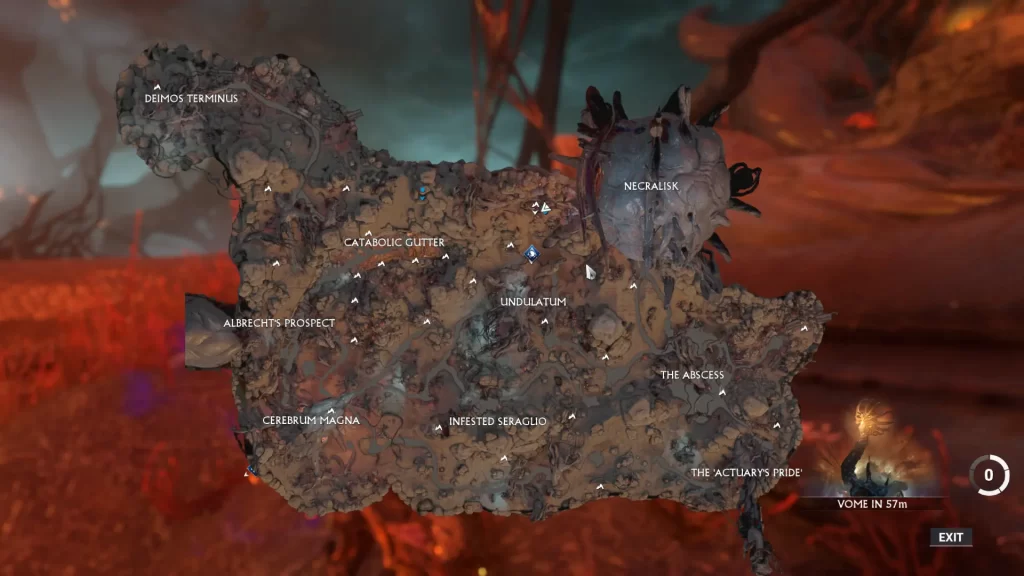
You can obtain Plastids alongside other resources from the area as well. While the local planet will only grant Nano Spores as a common, you can also find more useful things such as the various fishing and mining products native to the area.
Making use of this method to farm Plastids can be slower than using Ophelia, but if you need the resources for the Cambion Drift as well, then it might be worth a look for you.
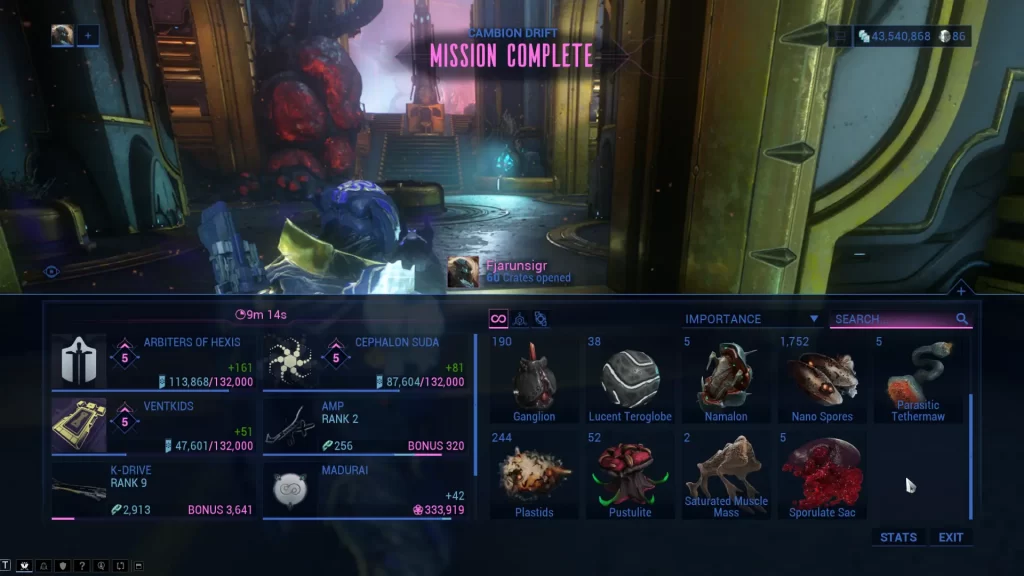
All in all the rewards for my attempts here were fairly disappointing, with only around 250 Plastids in just over 9 minutes. The impression I get from this method though is that it is highly variable, meaning you might have a very bad attempt such as this one, followed by a very successful one that produces 800 Plastids in 5 minutes.
I do think that the Survival mission Ophelia is likely better if your goal is purely Plastids though, as it is simply more reliable for the time you’re putting in.

